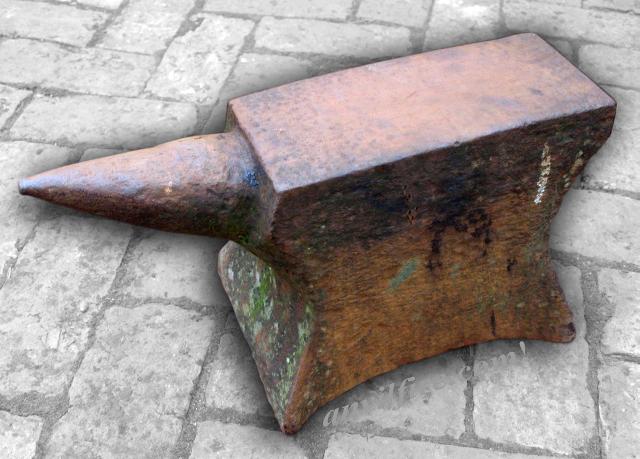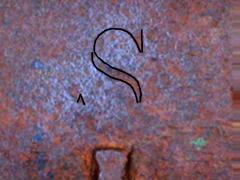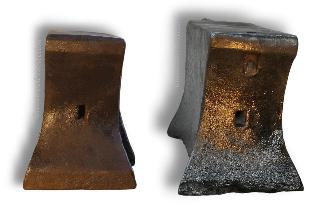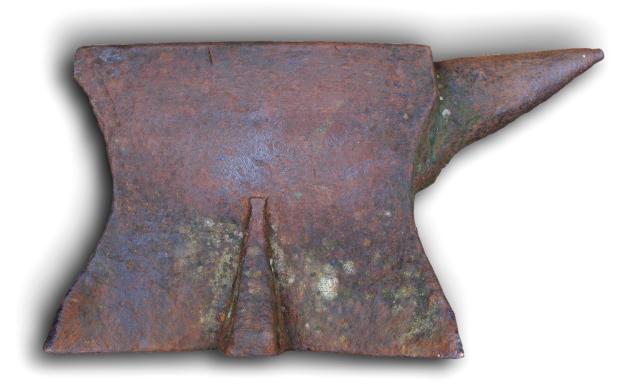Photos provided by Andy Mason, UK, digitally processed and grouped by Jock Dempsey.
Like many old tools the age and origins are often hard to determine.
This anvil found in Bristol, England is similar to Colonial Era American anvils. Andy says it has a great ring.
I've owned some mossy anvils my self. Makes you really think about their age.
One notable feature or lack of on this particular anvil is the absense of a hardie (square) hole.
The hardy hole has been a standard feature for so long that it is diffucult to know when it was first used.
Anvils of the same make similar to this one have hardie holes.

 While faint due to corrosion, the 'S' with its characteristic serifs can be clearly seen.
While faint due to corrosion, the 'S' with its characteristic serifs can be clearly seen.
Dimensions:
Length: 17" (~430 mm)
Height: 9" (~230 mm)
Face: 4 x 11" (~102 x 280 mm)
Feet: (width) 8" front, 8.5" back. (200 - 216 mm)
Same distinctive rectangular handling holes as below.

The "S" Anvils Features Comparison
The S anvils have several unique features that mark them as coming from the same British manufacturer.
Face slope, rectangular handling holes and the bold fifth foot.
Examples from the Greenwood Collection, Petersburg, VA, USA.







 While faint due to corrosion, the 'S' with its characteristic serifs can be clearly seen.
While faint due to corrosion, the 'S' with its characteristic serifs can be clearly seen.

städ, incus, aambeeld, batente, наковальня Stake, sheet metal, forming.